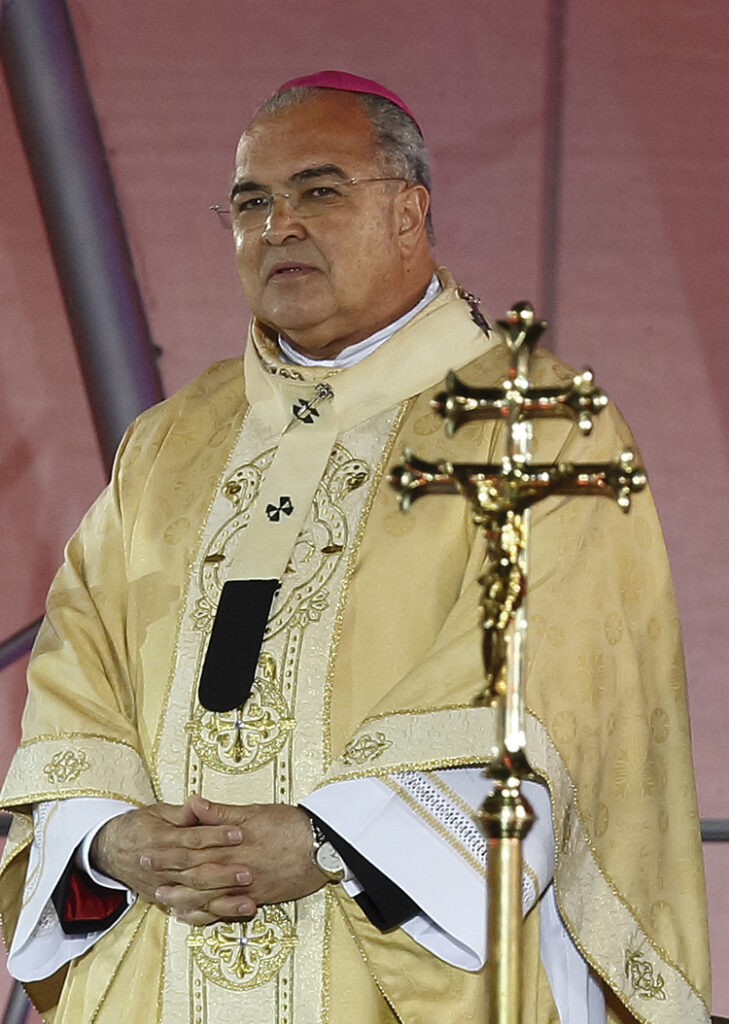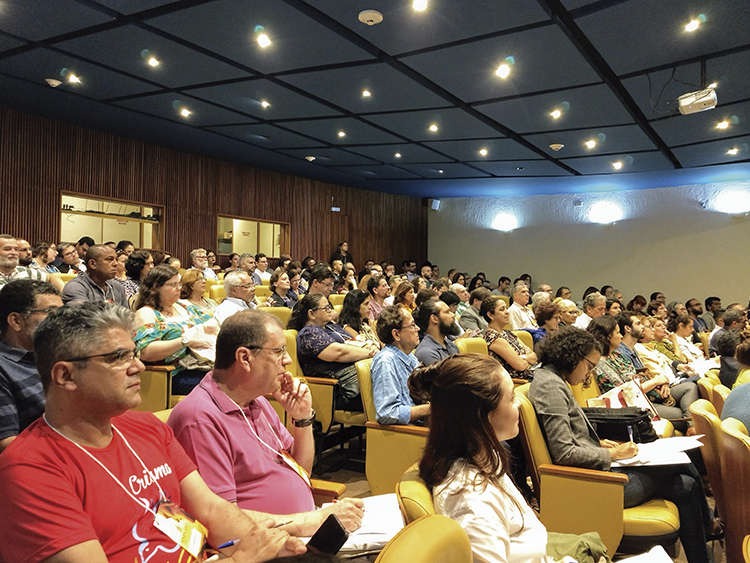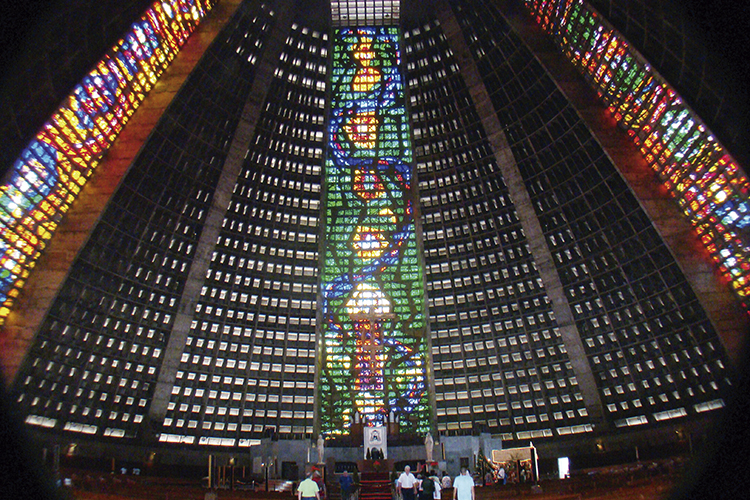The academic tradition on cultural heritage is long in Brazil. Early on, the nationalist policy of the Republic established a National Historical and Artistic Heritage Service, which has pointed to the baroque architecture of colonial times as a fundamental artistic reference of the Brazilian soul, similar to the French option for the Middle Ages as the historical cradle of France.
This is often the way intellectual elites think when they propose the monuments of the past as a banner of historical legitimization for emerging nations. However, with the passage of time, the patrimonialization of memory has reinforced the awareness of the expiration of the preservation criteria themselves, which needs constant study and updating. Of course, in Brazilian legislation the focus has migrated from the cultural asset to the cultural reference, i.e., from mere materiality to the attribution of value by society.
In any case, both the preservation and the appropriation of emblematic artifacts require a collective commitment, which is often difficult to achieve. of emblematic artifacts require a collective commitment, often difficult to achieve. often difficult to achieve.
Brazil: heritage preservation
The heritage of the Catholic Church in Brazil -historical, artistic, cultural and documentary assets-is abundant and represents about 50 % of the country's total cultural heritage.. For this reason, when the Agreement between the Holy See and the Brazilian State concerning the Legal Status of the Catholic Church in Brazil was concluded in Vatican City on November 13, 2008, two of its articles dealt specifically with the cultural goods of the Church, their protection and preservation. By the Agreement, the Church recognizes that these goods, although belonging to it, also belong to the Brazilian people; therefore, it undertakes to make them available to the people. The State, in turn, safeguarding the original purposes of these assets, undertakes to cooperate with the Church to value, conserve and promote the enjoyment of the Church's cultural assets.
Following the Agreement, the National Conference of Brazilian Bishops (CNBB) National Conference of Bishops of Brazil (CNBB) has created a Special Commission to study the matter. Commission to study the matter. It is now a permanent part of the Episcopal Pastoral Commission for Culture and Education. Meanwhile, many ecclesiastical provinces and dioceses in and dioceses in Brazil have also created their own commissions to assist and guide preservation and promotion policies. to assist and guide heritage preservation and promotion policies. and promotion of heritage.
The Rio de Janeiro Commission
This is the case, for example, of São Sebastião do Rio de Janeiro, where the Cardinal Orani João Tempesta formed, on October 18, 2018, the "Comissão de Preservação do Patrimônio Histórico e Cultural da Arquidiocese do Rio de Janeiro e seu Interesse".. This Commission is already carrying out several projects in the city: inventories, conservation plans, restoration projects, etc. A very important task is the investigation of the properties, since many of the classified buildings belong to one of the many secular brotherhoods of Rio de Janeiro and are not under the direct responsibility and administration of the archdiocese.

According to Cardinal Tempesta, "it is important that every diocese should have a commission in charge of conservation and restoration. of the cultural property of the Churchand to carry out a prior analysis of the construction, modification and restoration projects of the buildings and their collections".
It is well known that the work of cultural heritage management requires specialized knowledge. In the Brazilian case, it is also necessary to know how to dialogue with the various heritage protection bodies. In this sense, the cardinal summarized: "Another fundamental role of the Heritage Preservation Commission is integrating the Church with the other actors involved in the preservation of cultural heritageThe main challenges for the preservation and maintenance of cultural property are many, and only with the participation of all can more positive results be achieved".
Iconoclasm and cultural legacy
The initiative has come at a good time. On the one hand, a new iconoclasm of the world is echoing a new iconoclasm, which aims to tear down or vilify monuments. vilify monuments. Even in a small Brazilian town, founded by the "Apostle of Brazil", the the "Apostle of Brazil", St. Joseph of Anchieta, a city that bears his name and where the National Sanctuary of the the National Sanctuary of the country's patron saint, the bronze statue of the saint, located in the the bronze statue of the saint, located in the square, has been covered with red graffiti. At the destruction of the National Museum of Brazil, which was consumed by fire in 2018, has in 2018, has thrown those working in preservation into uncertainty about the future of cultural heritage. about the future of cultural heritage.
Commenting on these sad episodes, the curator of the Archdiocesan the curator of the Archdiocesan Commission, Fr. Silmar Alves Fernandes: "Whether because of economic crises that restrict funding, or because of a lack of interest in the whether it is due to a lack of interest resulting from a lack of awareness of the importance of so many works, or even to the imprudence of relegating of the importance of so many works, or even the imprudence of relegating cultural priorities to the background, the cultural priorities on the back burner, the fact is that several foreseeable and avoidable accidents are to be and avoidable accidents that, unfortunately, leave behind losses of incalculable value. incalculable losses. In the face of so many situations, the preservation of our historical and cultural heritage is a task that must be carried out with the utmost care. cultural heritage is a task that we must fulfill if we want to leave future generations the legacy of our heritage. leave to future generations the legacy of our identity as a people and a nation. nation.".
However, care for heritage goes beyond mere cultural or civic interest. As Pe. Silmar himself points out: "As for religious collections, like ours, the task also involves a commitment to the transmission of faithwhich is conferred on us as a mission, as followers of Jesus Christ"..
An international seminar
In order to make the Commission's mission known to the diocesan clergy, to the owners of classified property, and to professionals involved in preservation efforts, the Commission promoted as its first act the International Seminar on Catholic Historical and Cultural Heritagefrom June 3 to 7, 2019, at the National Historical Museum of Rio de Janeiro. The event was attended by its 200 registered participants, including priests, religious and seminarians, professionals in engineering, architecture, conservation and restoration, students and artists. Before the beginning of the sections, Mr. Orani Tempesta presided over a solemn Eucharistic concelebration in the parish of Our Lady of Mount Carmel, the former cathedral of Rio.

After the welcome from the curator of the commission, Pe. Silmar Alves Fernandesthe inaugural lecture of the seminar was given by Monsignor José Roberto Devellard, specialist in Sacred Art.
The event was followed by presentations by Brazilian and Portuguese experts, distributed Portuguese experts, divided into four sections: faith and religiosity; heritage protection; conservation and restoration conservation and restoration; collections, resources and investments. investments. In addition to the researchers, presentations were also made by ecclesiastical authorities and staff from authorities and important personalities of the Brazilian political and cultural scene. Brazilian political and cultural scene.
The seminar concluded with two guided visits, the first to the Archdiocesan Museum of Sacred Art, located in the basement of the Cathedral of St. Paul. Museum of Sacred Art, located in the basement of the Cathedral of San Sebastian. Sebastian Cathedral. Among the exhibits on display is the Golden Rose, a gift from Leo XIII to Princess Isabella to Princess Isabella for the abolition of slavery, the throne on which the Emperor Don Peter II attended Mass, some relics, sacred vessels and a series of works of art and jewelry. a series of works of art and jewelry.
Delivery of the works
The second was a guided visit to the chapel of Our Lady of Victory, inside the church of the Third Order of the Minims of St. Francis of Paola. The reason was special: the delivery of the completed restoration works to the population. The eighteenth century chapel, in rococo style, is one of the treasures of the city. It was made by the master Valentim da Fonseca e Silva, a brown man, son of a freed slave, who died in 1813, one of the most important artists of the Brazilian colonial period. The chapel houses paintings by Manuel da Cunha, a freed slave. Due to the action of time, the varnishes of the works darkened and hid the particularities of the pieces.
The restoration was done in a very short time, counting on the contribution of devotees and donors. The Cardinal thanked the commitment of the people with the sacred patrimony and the creativity for the economic measures adopted. "Even in times of scarce resources, I congratulate the Commission for the search for ways, for the first achievements, for the concern with the restoration of the Catholic patrimony. Preserving memory and thinking about future generations are part of our responsibility."said Don Orani.
Sacred art and upcoming commemorations
The same cardinal is encouraging the celebration of the upcoming jubilees, which are being organized by the Canon Cláudio dos SantosPastoral Coordinator of the Archdiocese and pastor of the Metropolitan Cathedral. The first commemoration is the 90th anniversary of Christ the Redeemer on October 12 next year, feast of Our Lady of the Conception Aparecida, patroness of Brazil. The iconic statue is the largest monument in Brazil. Art deco of the world.
Then, the main historical milestones will be: the bicentennial of the Independence of Brazil in 2022, the 450th anniversary of the creation of the territorial Prelature of Rio de Janeiro by Gregory XIII in 2025, and the 350th anniversary of its elevation to a diocese by Innocent XI in 2026. The Heritage Preservation Commission will play an important role in all these commemorations. The curator of the Commission, Fr. Silmar, has summarized in the three theological virtues the whole effort of preserving the Christian heritage: "This is the world we wish to echo in the sacred spaces preserved, with living faith, unwavering hope and love unfolding on earth. It is precisely there that the human creature recognizes his Creator, who intermittently blows all his creative ingenuity upon his ear, so that the world may not seem a desolate desert, but that there may be many oases for the thirsty pilgrims of Eternal Beauty.".











